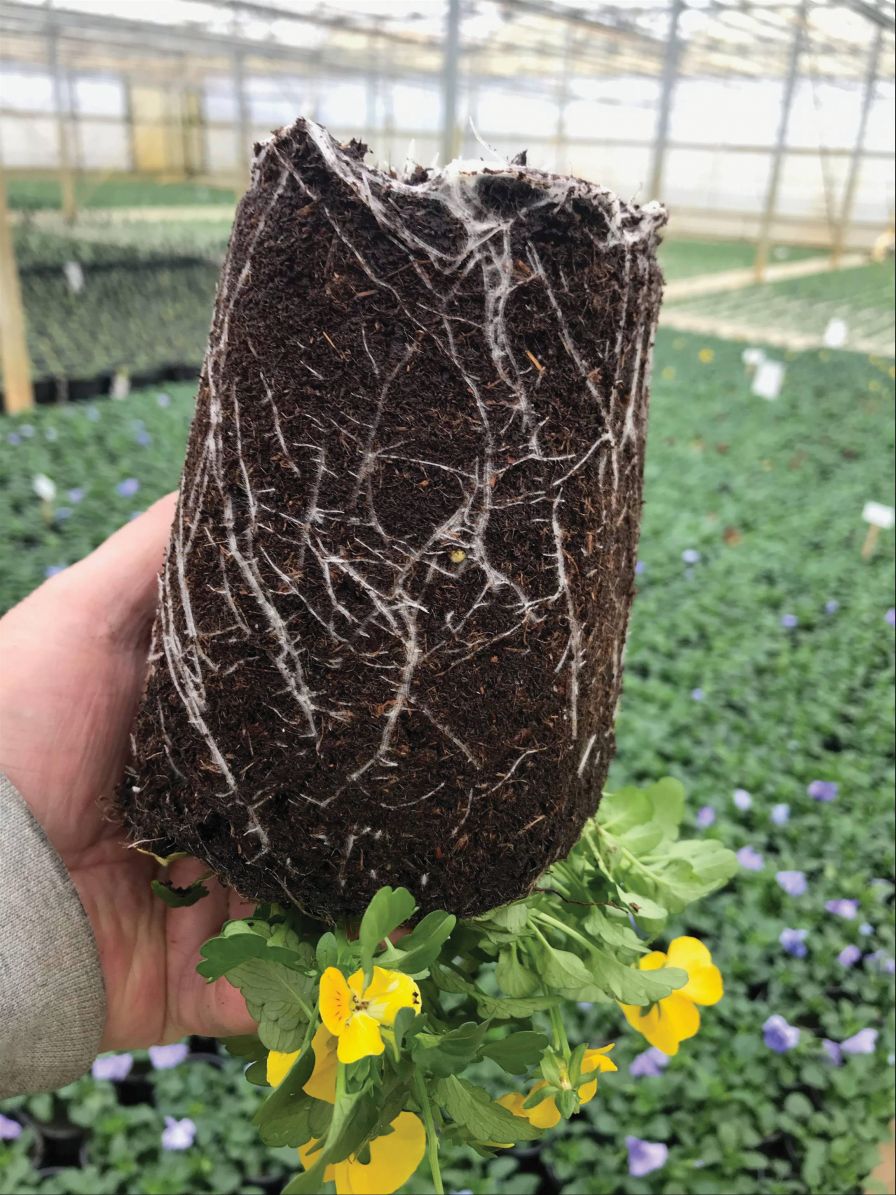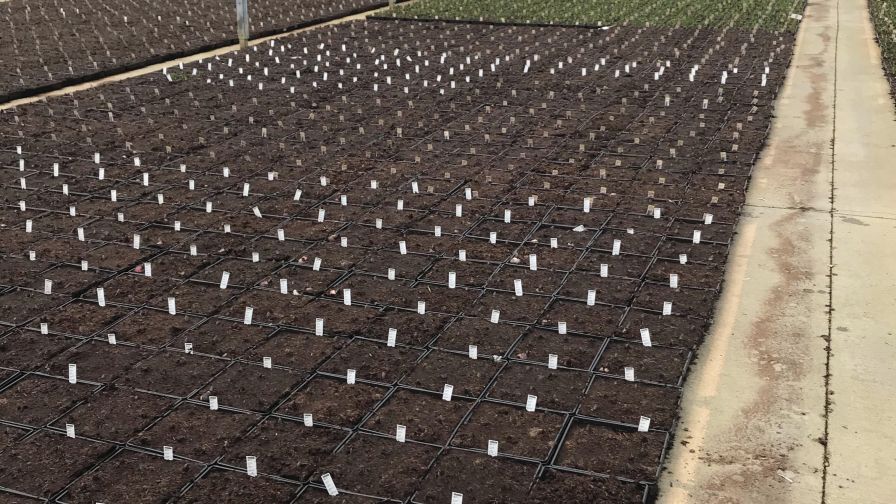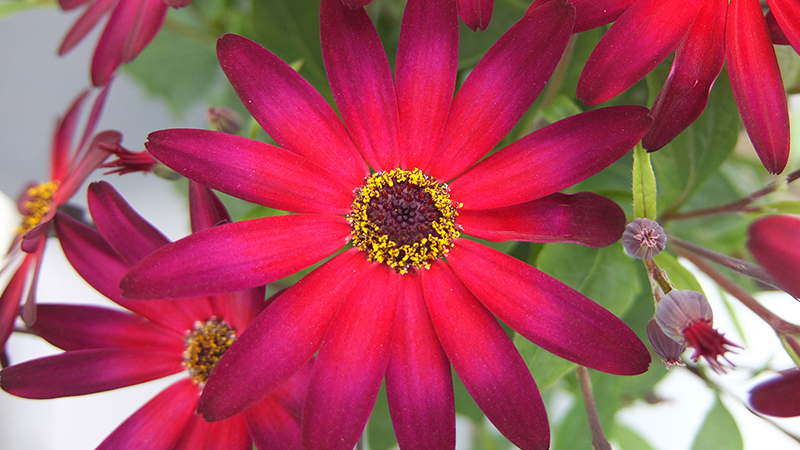Take a New Look at Short-Day Growing Your Ornamentals

Photo: Profile Products
Like clockwork, greenhouse growers coast to coast are once again in full production mode for the spring sales season and working hard to encourage lush plant growth this time of year. For many, it’s keeping the boiler running that’s the number one thing that keeps them awake at night, but water management is top of mind, too. Questions that come to mind this time of year include “What time of day to water?” or “How to keep the foliage canopy dry going into nights to keep disease pressure at bay?” The biggest question might be, “How often do I water my plants to get the nutrients they need but aren’t so waterlogged the roots can’t access air?”
These questions are all valid when it comes to developing the right water management strategy. But if they’re keeping you up at night, it’s time to dig deeper into the best practices — including evaluating mixes. While there are many factors that affect root development, the types of raw materials in your media mix can have a major impact. Getting the best results ultimately comes down to actively understanding and managing physical properties. As Dr. Will Healy, Senior Technical Manager at Ball Horticultural Company, has often shared with the industry, “Fish grow in water, roots grow in air.”
Therefore, the questions growers should instead be asking are, “How well does my mix hold water?” and, “How forgiving and flexible is my mix?” Especially during short-day production months, it’s vital to find the right balance in drying down the soil so roots can thrive, while at the same time not allowing it to dry down so far that plants can’t access nutrients and water.
The production managers at Bell Nursery in Springfield, OH, had to ask themselves these questions. They looked into wood-based substrates for the answer three years ago. With that transition, Ashley Smith, Head Grower at Bell Nursery, was able to rethink and adjust watering, especially in short days.
How Well Does My Mix Hold Water?
When Bell’s production team first started working with the new mix, they had to transition to a “look and see” process. No longer do they just check the tops of the pots before turning on the hose. Now when they see a dry crust, they evaluate the entire plant. Before watering, they pick up the pots and inspect the roots for saturation levels and only saturate soil once roots have reached the bottom of the pot. If growers don’t take a closer look at what’s happening below the surface, there’s a chance it can easily lead to over or under watering during short-day production.
“When soils are staying too wet or too dry, it’s important to look at the entire picture,” says Daniel Norden, Senior Research and Development Manager at Profile Products, which produces HydraFiber, a substrate engineered from renewable and virgin Southern Yellow Pine. “Growers need to look at their current mix holistically, then determine if something is amiss. There may be a variety of reasons: equipment malfunctions, machine calibrations, raw material quality, etc. Some deals on raw materials may be tempting, but sometimes there are compromises on the quality and often this means low air space.“
Bell’s team quickly saw that their HydraFiber blends dry faster on the surface while making more water available to the plant. The substrate’s very fine, long engineered fibers have tremendous surface area, with the unique particles providing air space as well as better water-holding ability. Similar to the way water beads up in a shower, water particles bead on the engineered fiber surface so the plant doesn’t have to work as hard to access them. By incorporating this into their mix, Bell Nursery found their plants could go longer between watering, especially during cold, short-day growing conditions.
“Roots need air to develop,” Smith said. “If you can find the right balance between dry down and water frequency, it really helps to facilitate a great root system, which leads to a healthy plant, which in turn leads to a happy customer. The air space in our current mix helps us to develop a strong root system before we develop a lot of plant mass.”
 How Forgiving Is Your Mix?
How Forgiving Is Your Mix?
While monitoring plants is a great first step, it still leaves many factors at play in determining how long to go between watering. How much longer depends on how long the days are, what night temperatures are and how much water is being given in the first place. Having a mix that is flexible and forgiving can eliminate some of the frustration that comes with those variables.
For Bell Nursery, their current mixes allow the production team time to visually inspect the plants before diving into a regimented watering schedule. That allows them to better handle those variables during short-day production.
“I’ve learned our current mixes don’t need to be watered immediately, and I am not under pressure to water all the time.” Smith said. “We know how to let the soils dry down yet not negatively impact the plant growth. During longer days, our wood-fiber blends act very much like a traditional peat/perlite blend. However, under these short-day production periods, we can sometimes go up to 10 days in between watering.”
With less frequent watering, it’s natural to assume that other aspects of production need to also be adjusted to realize good plant growth, including fertilization. However, Smith says having a flexible and forgiving mix has helped in this regard, too.
“Depending on the crop, we typically use between 100 and 400 ppm water-soluble fertilizer,” Smith says. “Even during short-day growing conditions when we are watering less frequently, we keep everything the same. In fact, my sense is that our fertilizers aren’t being leached out as much, so perhaps they are even working harder for us.”
At the end of the day, water management is going to be unique to every growing operation. But by asking yourself these questions, you may find the answer to water management has less to do with the watering schedule, and more to do with your mix.









